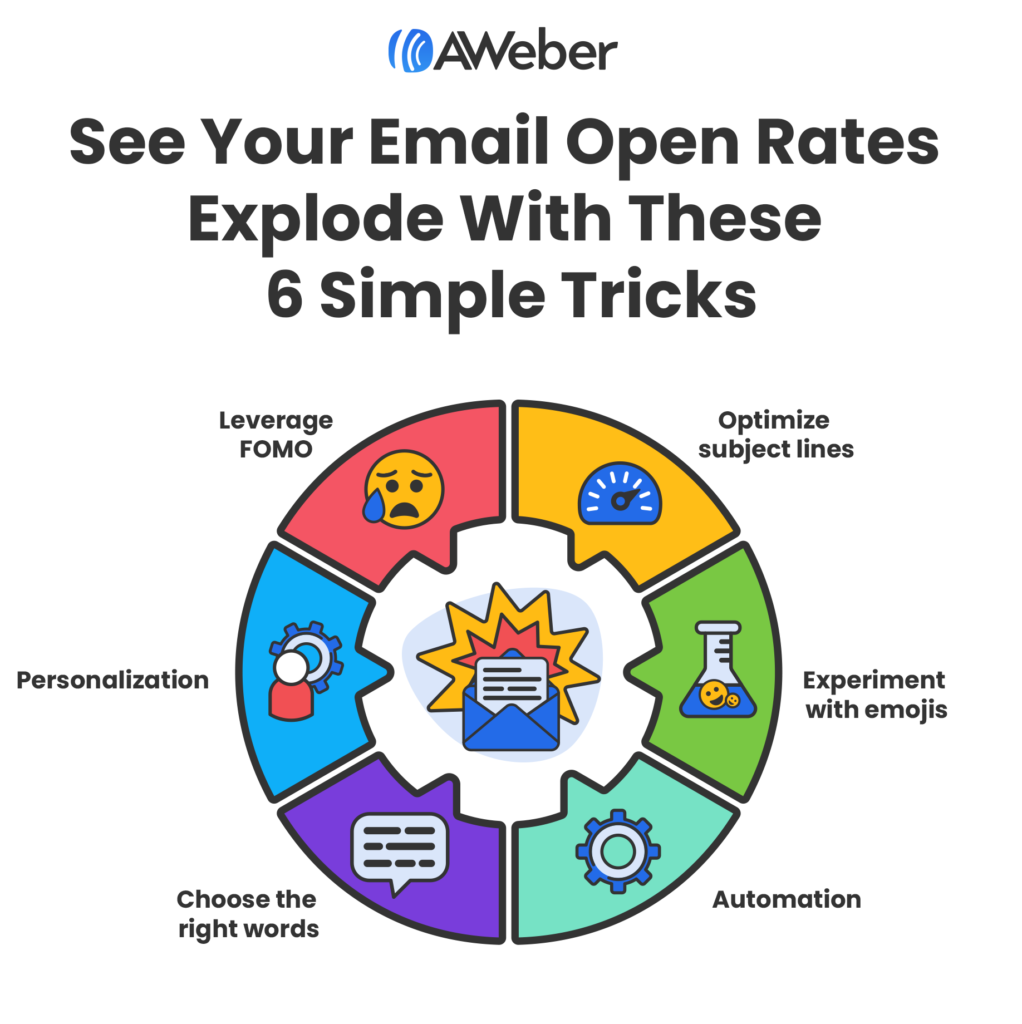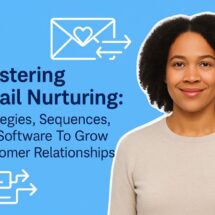See Your Email Open Rates Explode With These 6 Simple Tricks
By Nahla Davies November 10, 2021
The holidays are right around the corner, and most businesses are hoping to capitalize on the festivities.
Marketing teams have been hard at work analyzing market research and understanding what their buyers are looking for from their brand. What have they discovered? Online spending by Black Friday shoppers is projected to surpass the $14 billion spent last year by 20%.
With this in mind, ecommerce and other online retail businesses have been honing in on their email marketing campaigns so that they can reach their goals for the end of the year.
Many sales and marketing professionals spend hours carefully crafting the perfect email, combining rich content with a clever subject line and personalized messaging.
Unfortunately, marketing teams are often left disappointed when they finally discover that their prospects left those emails unopened. Consumers have become accustomed to receiving hundreds of sales and spam emails everyday, so email open rates are falling as the noise of the business world grows louder.
So how can you cut through all the noise and forge connections with your subscribers via email? Let’s take a look at some tried and true tips to increase email open rates.
Tricks to increase email open rates
Email marketing can be challenging, particularly when one considers email security, data analysis, and other factors that go into a comprehensive email strategy.
And if your customers never read them, all that effort is for naught. Fortunately, there are some tricks that many marketers implement successfully in order to convince prospective customers to take a look at their emails:

1 – Personalize emails
There are many ways to create a personalized experience for customers such as using their name in the greeting, utilizing past shopping data to understand more about their interests, and appealing to their senses with interesting content and aesthetics.
Many major marketing teams already have talent available who can write personalized copy for different buyer personas and campaigns.
Small businesses, on the other hand, are less likely to have access to these kinds of resources. That’s why so many businesses hire freelance writers to write email copy and other marketing content. You can expect to pay at least $20 an hour for a quality freelance writer, which fits within most budgets, especially considering the potential return on investment (ROI).
See how Dick’s Sporting Goods using personalization to tease of the content inside the email. The email offer is then personalized based on similar content from previous purchases.
2 – Leverage FOMO
FOMO, or fear of missing out, is a real phenomenon that affects nearly everyone to some degree. When we see others experiencing a high quality service or an awesome new product we can’t help but want to know what all the fuss is about.
Missing out on a good opportunity is disappointing for 56% of those who suffer from FOMO. Leave them wanting more, and they will come running to your business.
Show them what they’re missing in your email marketing campaigns by sharing feedback and experiences from real customers who love your brand (this is also referred to as social proof).
Some ideas for creating FOMO feelings include
- approaching sale deadlines
- limited products or timeframes to buy
- social feedback and online reviews
- and even presenting testimonials and case studies in your email content.
See how Gap and Allstate using expiring language in their subject lines to leverage a fear of missing out.


3 – Optimize subject lines
Subject lines are like first impressions, brief but very important. When consumers receive a new email notification they are likely to read the subject line and decide whether or not it is worth opening from that information alone.
To optimize your subject lines, it’s important to use attention grabbing phrases and personalize wherever possible. Marketers should also be direct and get right to the point so customers know why they need to open your email right now.
Look at what stands out to you in your email inbox. What makes you roll your eyes, and what intrigues you? Keep it concise, and avoid cliches and common marketing phrases.
Here are some straightforward email subject line examples:

4 – Experiment with emojis
Depending on the kind of business you are running, emojis may be hit or miss. However, 6.9% of subject lines from today’s top marketers include emojis. A well thought out emoji placement can really make your messaging stand out against the backdrop of any busy inbox.
In order to avoid coming across as tacky or otherwise unappealing, it’s critical to use A/B testing to understand the impact of adding emojis into your subject lines.
The Redbox example below shows a clever way to bring the fire emojis into the email taking about the hot list of free movies.

5 – Automate email marketing
Automated marketing involves setting parameters for customer-initiated events that trigger an email depending on the action taken. Triggers can be set for a number of customer actions including abandoned carts, logging in for the first time in a while, or posting a review.
Research indicates that triggered emails are 38% more likely to be opened because they are relevant to the customer’s real life experiences with your brand. A relevant message that offers customers information or value is a great way to help increase email open rates.

6 – Choose your words wisely
Finally, it’s important to use impactful wording that grabs the attention of readers to increase their likelihood of reading your messages. Here are some of the most effective words to impact email engagement:
- Now
- You/Your
- Thanks
- New
- Easy
- Free
Try using some of these words in your subject lines and see if they make a difference in the success of your email campaigns.
The Home Depot example below manages to get two of the most effect words into their subject line.

The future of email marketing
The future of email marketing as a sustainable marketing channel looks bright. The number of email users is supposed to reach 4.6 billion by 2025. With the number of people still using email for daily activities steadily increasing over time, you can be sure that email will be around for the long haul.
What’s more, ecommerce is booming, and email is a crucial part of digital marketing for online businesses. In 2014, ecommerce only made up 10% of retail sales compared to 40% in 2021. It’s not just advertising either. With more people shopping online than ever before, there is a growing need for order and delivery confirmations and other ecommerce communication to take place via email.
Conclusion
Whether a business has 50 customers or 5 million customers, email is still a great way to make direct contact with audiences about new products, exciting promotions, and updates about their favorite brands. Incorporate some of these tips to differentiate your business and nurture relationships with prospects and customers alike.

